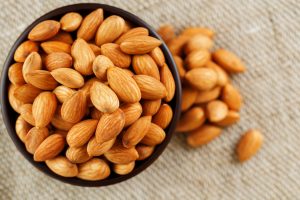The mere thought of pineapple brings images of the tropics and a memory of sweetness.
But there’s more to this spiny fruit than a warm weather treat.
Pineapples are one of the healthiest foods you can eat, and are also one of the most interesting.
Did you know that the scales of a pineapple are berries that have fused together? It’s true!
TweetPineapples have A TON of Vitamin C and a mineral called manganese that’s important to bone formation. And that’s just the start!
Top 4 Reasons to Love Pineapple
1. Pineapples are great for weight loss
Fresh pineapple has less than 100 calories per cup. (In case you're still counting calories.)
It has no fat or cholesterol, is low in sodium and high in fiber.
Just be mindful of the sugar content, as that 1 cup has 16 grams of sugar.
2. Great way to get Vitamin C
We all think of oranges as the best source of Vitamin C, but while 1 cup of oranges has 69.7 mg, pineapple boasts 78.9 mg of the immune booster.
Studies have shown Vitamin C can decrease how long colds last. It also can fight heart disease and joint pain.
Vitamin C has been shown to protect DNA from damage by free radicals. It also helps produce collagen and helps your body absorb iron. It has even been credited with cutting the risk of macular degeneration.
3. Bromelain breaks food down
Pineapples contain a special enzyme called bromelain that cuts down on bloating. It helps us break down the protein in our food, and speeds up our digestion.
It’s also a great post-workout food, as bromelain has been shown to help fight inflammation.

There’s even word that people who eat pineapple cuts the risk of blood clots, as the bromelain it contains can reduce excess blood coagulation.
4. Manganese helps bone strength and skin glow
Manganese is a mineral that builds our connective tissue and bones. It is great for women who want to cut their risk of osteoporosis.
It also works with an enzyme called prolidase that increases the collagen in our skin.
Pineapple Smart Shopping Tips
Assuming you don't live in a tropical paradise, you'll need to remember a few tips when shopping for pineapples.
There's a big difference between eating fresh pineapple and canned, which has more calories and sugar.
- Whenever possible, buy your pineapple fresh or frozen.
- If you have to buy canned, look for fruit that has no added sugar and that’s packed in juice instead of syrup.
Fresh pineapples are available all year round, but how can you tell if they're ripe? The secret is in the smell at the bottom of the pineapple.
If it smells like pineapple juice, then it’s ripe and ready.
If it doesn’t smell like anything, then it won’t be sweet.
Pineapples are versatile too.
You can add them or their juice to smoothies, toss them into a salad, or bake them with fish or chicken. The recipe below is one of my favorite ways to enjoy pineapple as a delicious, healthy dessert.
Grilled Pineapple
1 Fresh Pineapple, sliced thick
Marinade
2 Tbsp. raw honey
1 tsp olive oil
1 Tbsp. fresh lime juice
1 tsp ground cinnamon
8 pineapple slices, ½ inch thick
Combine first four ingredients in a bowl and set aside.
Heat grill. Brush pineapple on both sides with marinade, then place on grill.
Turn once marks form on grill side, baste once and grill until other side is also golden.
Serve warm.
Prefer your pineapple chilled? Try my easy 2 Ingredient Tropical Whip. It's amazing and will help you beat the heat!
Yours in Health,
Danette
P.S. Please share this with your pineapple loving friends and I welcome your comments below.




